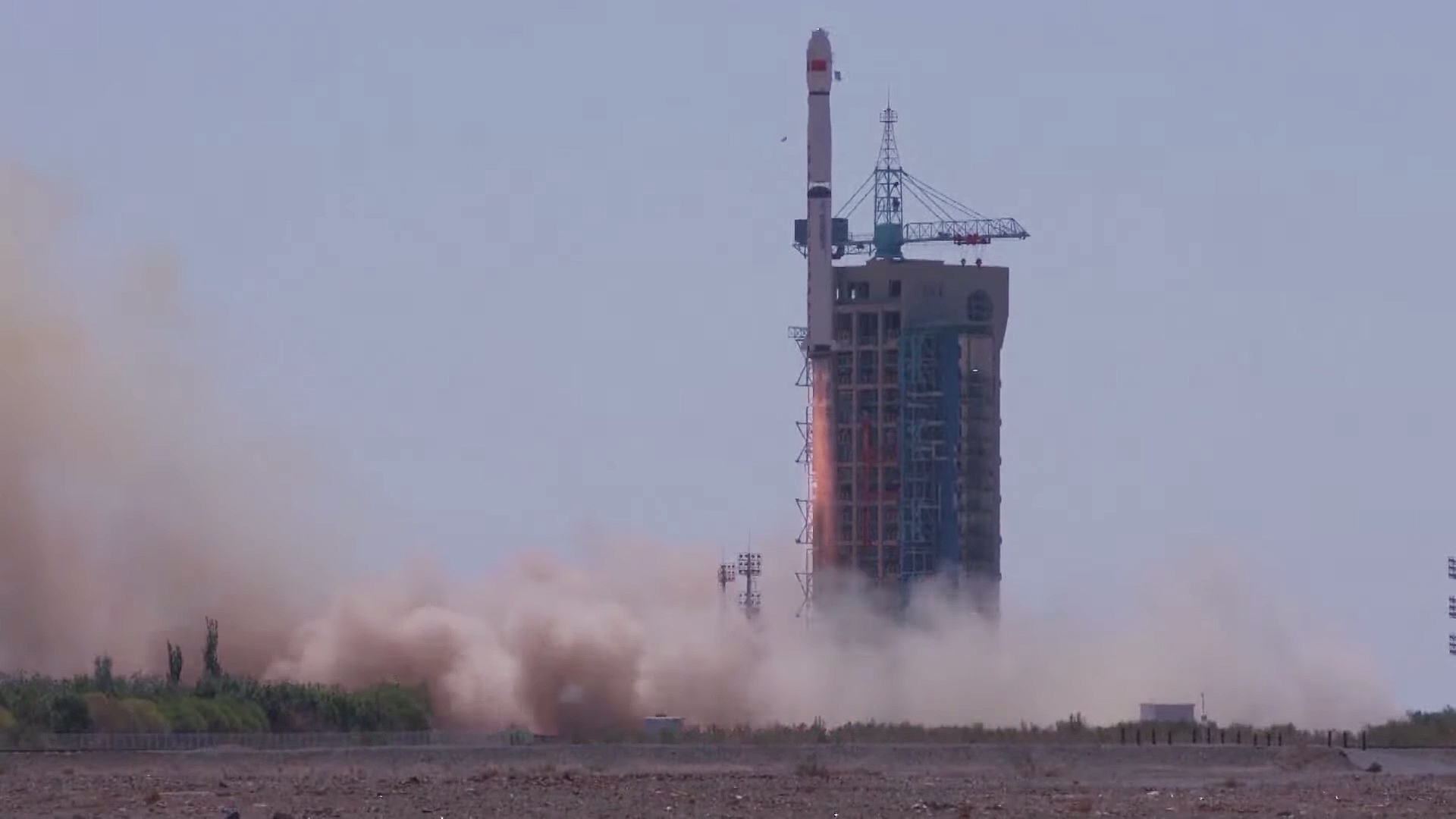China Launches 5 New Earth Observation Satellites into Orbit (Video)
A Chinese Long March 11 rocket successfully launched five new remote-sensing satellites today (Sept. 19).
The rocket lifted off from the Jiuquan Satellite Launch Center in China's Gobi Desert at 2:42 p.m. local time (2:42 a.m. EDT; 0642 GMT), lofting the Zhuhai-1 Group-3 satellites into orbit.
Those satellites will join a commercial satellite constellation built and operated by the Chinese company Zhuhai Orbita Aerospace Science and Technology Co., Ltd. That constellation, called Zhuhai-1, will ultimately consist of 34 small satellites, including video, hyperspectral, and high-resolution optical satellites, as well as radar and infrared satellites, according to China's state-run Xinhuanet news agency.
Related: Latest News About China's Space Program
Video: China's Long March 11 Rocket Launches 5 Satellites
Seven Zhuhai-1 satellites were already in orbit before today's launch. The first two were video satellites, designated OVS-1A and OVS-1B, and they launched together in June 2017. Five additional satellites launched in April 2018, including four hyperspectral Earth-observation satellites designated as OHS-01, 02, 03 and 04, and the OVS-2 video satellite. Today's launch added four more hyperspectral satellites and one more video satellite to the constellation.
According to Xinhuanet, the hyperspectral satellites "have the highest spatial resolution and the largest coverage width of their type in China," and the data and imagery from the satellite constellation will be used to study vegetation, water and crops, and "will provide services for building smart cities."
ICYMI: China's Kuaizhou-1A Rocket Launched in August
This was the second commercial launch from China in less than three weeks. On Aug. 31, a Kuaizhou-1A rocket launched a pair of commercial satellites from the Jiuquan Satellite Launch Center. That was the third launch of this new commercial rocket, which was developed by the China Aerospace Science and Industry Corporation.
Breaking space news, the latest updates on rocket launches, skywatching events and more!
Video: Blastoff! Commercial Kuaizhou-1A Rocket Launches from China
On board the Kuaizhou-1A rocket was a microgravity experiment for the Chinese Academy of Sciences called KX-09. That satellite, which was the primary payload for this mission, will support future fundamental science research, according to Space News. A secondary payload, a 6U cubesat called Xiaoxiang-1 (07), hitched a ride with KX-09 to test a new spaceborne air traffic control technology
It's been a busy year for China's space industry, with 17 orbital rocket launches under the belt and plenty more to go. The main contractor for China's space program announced in January that more than 30 missions would launch in 2019. The next launch is scheduled for Sept. 24, when a Long March 3B rocket will send a payload for the Beidou navigation constellation into orbit.
- China Aces Its 1st Rocket Launch at Sea, Puts 7 Satellites in Orbit (Video)
- Chinese State-Owned Firms Preparing to Launch New Commercial Rockets
- China's Private 'Smart Dragon-1' Rocket Aces 1st Mission
Email Hanneke Weitering at hweitering@space.com or follow her @hannekescience. Follow us on Twitter @Spacedotcom and on Facebook.

Hanneke Weitering is a multimedia journalist in the Pacific Northwest reporting on the future of aviation at FutureFlight.aero and Aviation International News and was previously the Editor for Spaceflight and Astronomy news here at Space.com. As an editor with over 10 years of experience in science journalism she has previously written for Scholastic Classroom Magazines, MedPage Today and The Joint Institute for Computational Sciences at Oak Ridge National Laboratory. After studying physics at the University of Tennessee in her hometown of Knoxville, she earned her graduate degree in Science, Health and Environmental Reporting (SHERP) from New York University. Hanneke joined the Space.com team in 2016 as a staff writer and producer, covering topics including spaceflight and astronomy. She currently lives in Seattle, home of the Space Needle, with her cat and two snakes. In her spare time, Hanneke enjoys exploring the Rocky Mountains, basking in nature and looking for dark skies to gaze at the cosmos.

